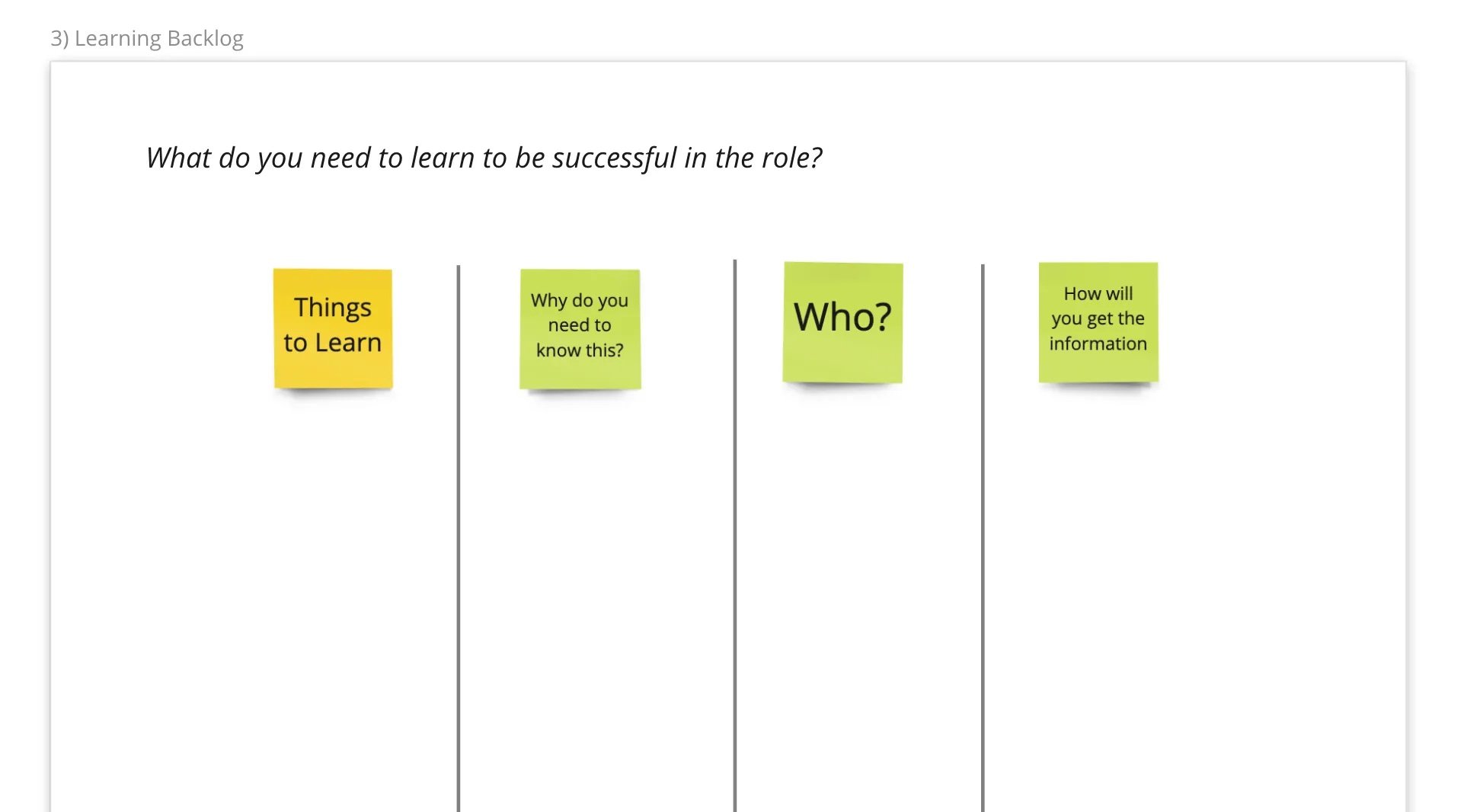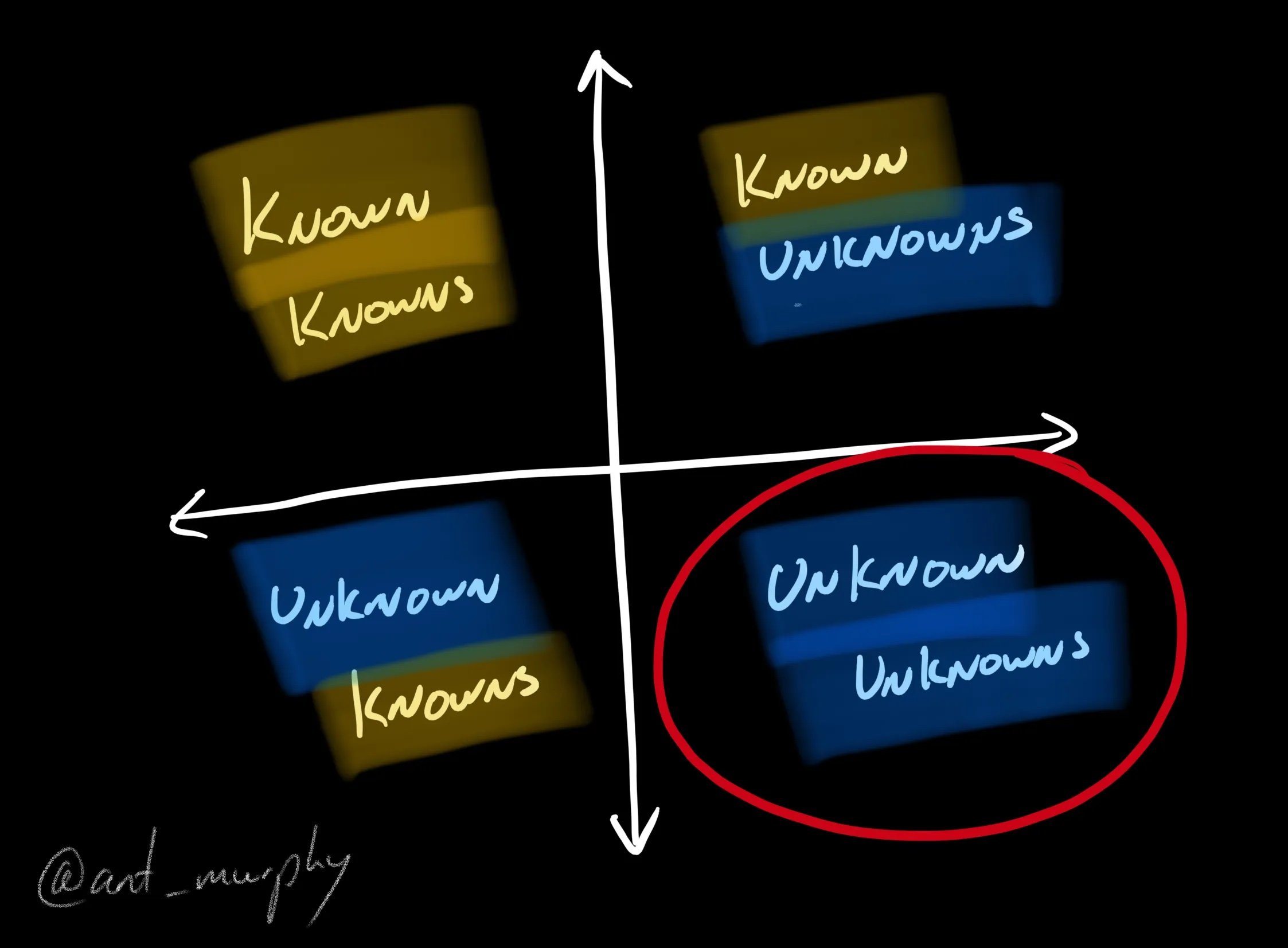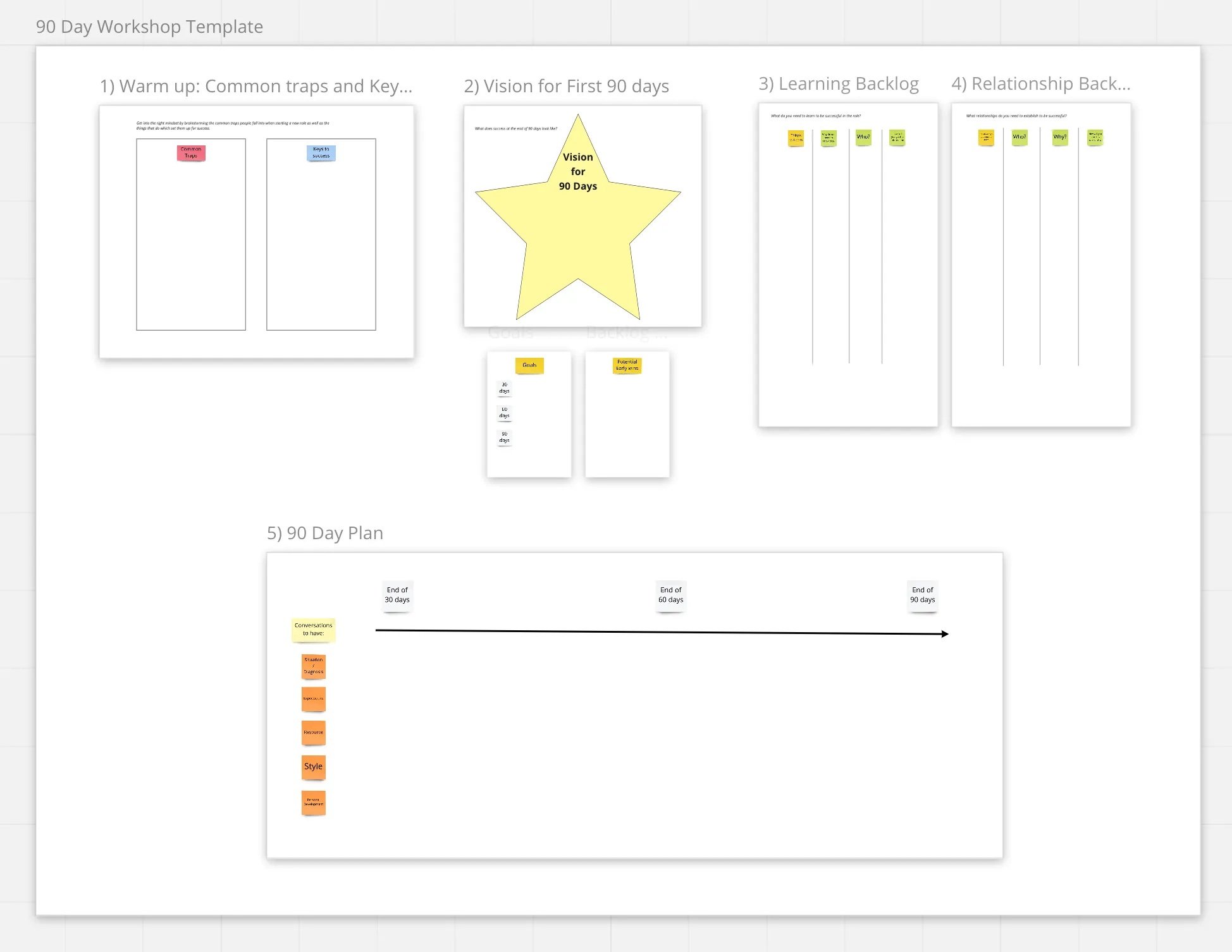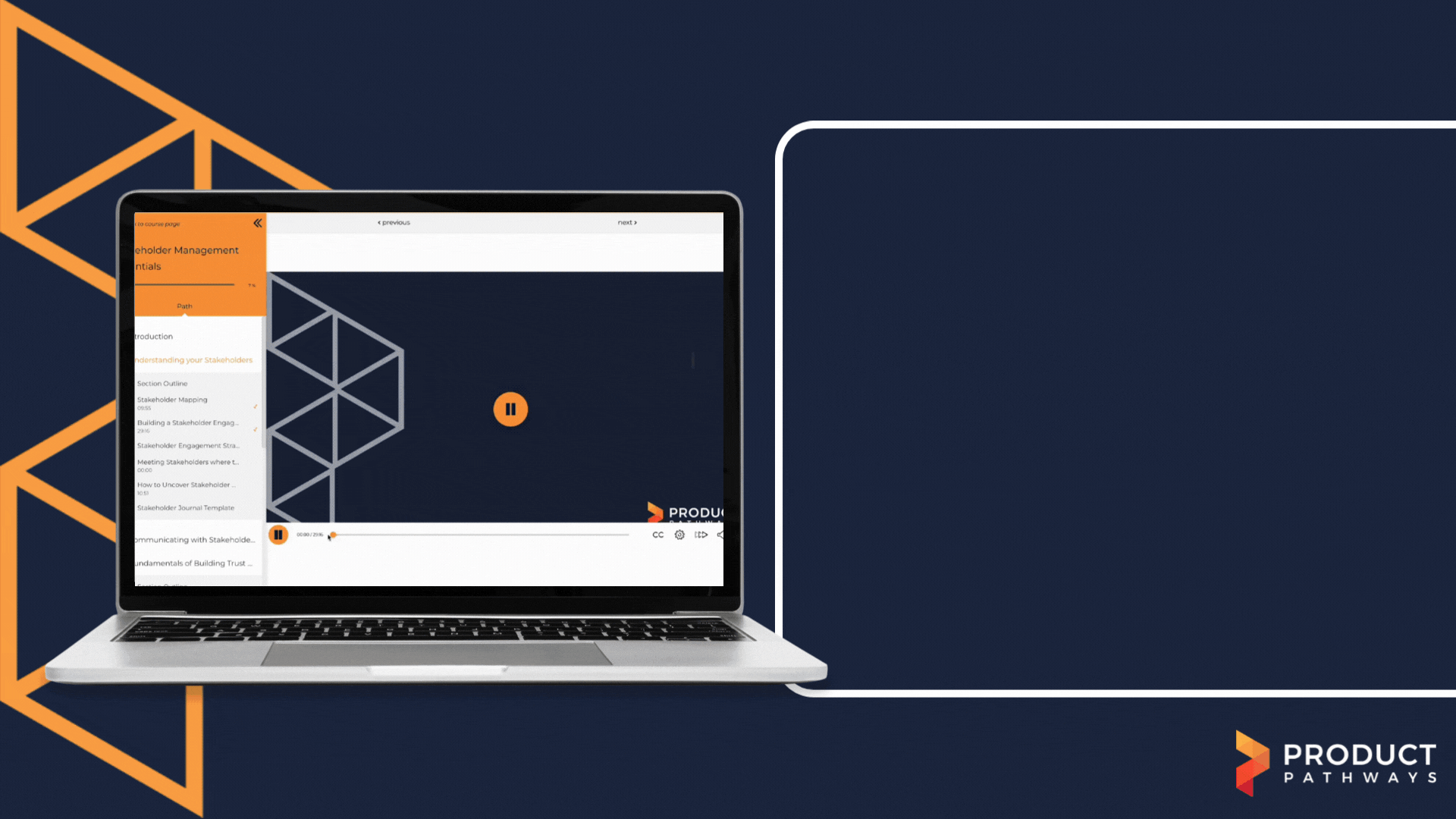A Product Manager’s First 90 Days
Build longterm success when starting a new job
📣 I’ve created a self-paced course on approaching your First 90 Days here.
Get the First 90 Day Workshop board here.
Photo by Andrea Piacquadio from PexelsAbout half of the Product Managers I coach 1:1 are seeking support with either finding a new role or they have recently started a new role.
So I wanted to share with you how I approach the first 90 days.
This is based on my experience through both starting new roles myself, onboarding Product Managers, as well as the dozens of Product managers I’ve coached through their first 90 days.
I also highly recommend the book The First 90 Days by Michael Watkins. I have over the years put much of this book into practice. It’s a goldmine of tips, tools, techniques for not just succeeding in your first 90 days but plenty of leadership lessons as well.
I hope this is useful. Although primarily based on my experience in product roles, much of this is transferrable to starting any new role.
Treat starting a new job like a Product
Like with most things in my life, I product-manage them.
This means approaching your first 90 days like a Product.
At a high level I like to break the first 90 days down into essentially 3x 30 days sprints.
Sprint 1 (0–30 days) = Discovery
Sprint 2 (30–60 days) = Quick wins
Sprint 3 (60–90 days) = Establishing trust
First 30 days = Discovery
Your first goal when starting a new job should be to learn as much as possible.
To learn effectively it’s important that make sure any learning is deliberate.
A common mistake people make when starting a new role is that they assume that their manager, team or organisation will provide them with all the information they need to be successful — seldomly is that the case.
Rather you cannot rely on the others giving you the information you need, you need to plan and control your own learning.
So, before you start the role, or within your first 2 weeks, build yourself a ‘learning backlog’.
A learning backlog is what the name suggests — a backlog of things you need to learn/know to be successful in your role.
This can be simply a mind-map or brainstorm on a Miro board or it can be more structured.
I personally have found using the following structure useful:
What do you need to learn?
Why do you need to know this?
Who might you learn it from?
How do you plan to get the information?
Example: Learning backlog templateThere are many ways you can learn what you need:
Read a document — e.g. the company strategy
Use the thing — e.g. spend time familiarising yourself with the product
Speak with people — e.g. book meetings to run through topic x.
However, one of your sub-goals for the first 30 days should be to interview as many people as possible — why?
Two main reasons for this:
Your learning backlog contains only known-unknowns — not your unknown-unknowns.
You need to build healthy relationships with key people.
Therefore, ideally in your first couple of weeks you should aim to interview as many people as possible.
When interviewing you should have at least 3 questions that you ask everyone — like “what is the biggest challenge that you think this role will face” “what do you think is the companies biggest strength is?” — this will help benchmark and find common themes as well as areas of dissonance.
What you are trying to do is actively uncover the things that are important which you don’t know about (unknown-unknowns) whilst also introducing yourself and laying the foundation for building rapport.
And of course don’t call them interviews — I schedule them as ‘coffee catchups’.
Situational Playback
Finally, at the end of the first 30 days you should aim to have what Michael Watkins calls the ‘situational conversation’ with either your team, direct manager and/or key stakeholders.
The intent behind a situational conversation is to playback all the things that you have learned in your discovery and see if your observations align to theirs.
This is your chance to get feedback and adjust before you begin to hit the ground running.
During this conversation keep an eye out on what resonates and what doesn’t as you lay out your plan for what you intend to do next so you can better align your quick wins in the next 30 days.
🔥Pro-tip🔥 During your interviews (coffee catchups) you should also be thinking about whether this person is something you need to have an ongoing relationship with — perhaps they are a key stakeholder.
Use this opportunity to set an ongoing cadence for how you plan to maintain the relationship with them — e.g. at the end of the catchup, ask if they’d be open to making this a regular catchup?
Bonus: Build a Relationship Backlog too — who do you need to form strong relationships with? Why? How will you achieve this?30–60 days = Quick Wins
Whether you like it or not, you are still being assessed.
You may have passed the interviews and landed the job but people are still ascertaining whether they made the right decision or not — time to show them they did!
Therefore, either as part of your situational playback or sometime soon after you need to create alignment with your direct-manager, stakeholders and/or team on what you intend to work on next.
This will be the first moment you really start to get hands on and start executing.
It’s important that this happens as early as possible, although not too early that you sacrifice valuable learning you get in the first 2–4 weeks.
A common mistake people make in new roles is that they assume they ‘know it all’ — they hit the grounding running from day one which generally results in them making a fool of themselves.
Just like we do with our products we perform discovery first to ensure we understand the problem space properly and we are solving the right problem in the best possible way — the same goes here.
I find that the 30 day mark to be about the sweet spot between spending too much time learning vs executing too early.
With this in mind during your first 30 days and in your discovery you need to be on the look out for what I would call quick-wins.
These are things that you can execute to completion in no more than a couple of weeks.
They should be both low-hanging fruit but also have a high enough level of importance that they will get visibility — there’s little value in securing a quick-win on something that wasn’t really a priority or actually a problem for the organisation.
Quick wins are important for establishing credibility and rapport in the organisation. So be sure not to take on anything too difficult that has a high degree of chances to fail.
🔥Pro-tip🔥During this time (or before) you want to be having two more conversations with your manager/team/key stakeholders.
One conversation will be focused on “expectations” (this includes expectations on the quick-wins you’re going to focus on). The goal is to set yourself up for success by ensuring that your direct manager and key stakeholders aren’t expecting too much from you.
Second conversation is about “style”. This conversation should covering how you like to work as well as how they would like you to communicate with them.
60–90 days = Establishing Trust
The last 30 days is then focused on building upon the credibility and rapport you’ve established from the early wins and turning it into trust.
Credibility and rapport are two key foundations to establishing trust.
You need to show others that you are competent and capable of doing the job.
You need to also establish credibility in the sense that you have consistency — when you say you will do something you will do it, etc. Hence why the quick-wins are so important.
Finally to earn trust you also need to have rapport with them. People seldomly trust people they don’t know.
It’s common to uncover larger and arguably more important problems early on in your first 90 days but it’s critical that you hold off on trying to tackle them until this point — why?
Because you will have greater success with:
a) creating buy-in, and
b) gaining resources and empowerment to tackling them, when you have established this trust.
Finally it’s important that during this time you are also creating a plan for the next 90 days and beyond.
🔥Pro-tip🔥During this time you want to also ensure you’re beginning to have the conversation with your line-managers about your own personal development.
Now that you’ve proven yourself and established trust you will have greater success in positioning yourself for key opportunities and pathing a path for your career development.
Bonus: Retrospectives
A bonus activity I recommend is to run Retrospectives and ‘Sprint Reviews’ at the end of each month.
You can do this individually or with your team/manager/stakeholders.
Spend a few minutes reflecting on how the month went — what went well? what have you struggled with? and what have you learned?
For the Review it can be within this activity but it can also just be a write up of all the things that you achieve that month and what you intend to tackle next month.
This is a great way to get early and ongoing feedback.
Finally, remember to revisit your 90 day plan and adjust where necessary too.
Miro Board to plan your first 90 days
Here is a link to the Miro board that I use to plan my first 90 days.
I generally try to workshops this with Product Manager’s in their first week — Miro board link.
My 90 day workshop template: Miro linkBuild long-term success with your First 90 Days 👇
📣 I’ve packaged all this and more into a self-paced course over at Product Pathways here.
Learn product online at ProductPathways.com and free on YouTube @ProductPathways.




